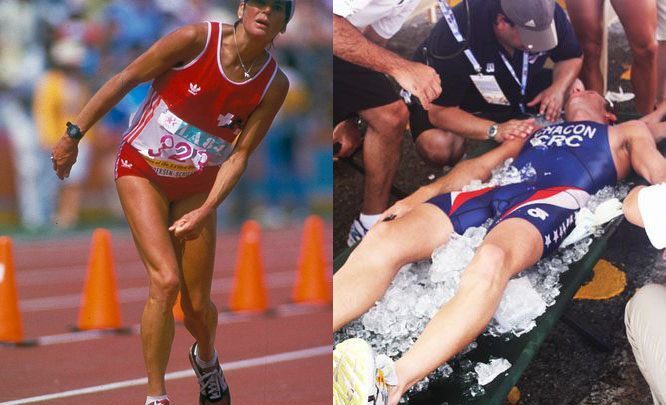Heat stroke: How to recognize your symptoms and how to avoid it?
Heat stroke is what happens when our body overheats

Our friends Zone3, leading brand in wetsuits and accessories for triathlon and swimming tell us in this article how we can detect a heat stroke as well as a series of tips to avoid it.
For us who live in Spain, with cold winters, going out to train and not sweating in winter is more than normal. To be fair, it is very easy to forget to hydrate while exercising or even in everyday life. But in a world in which we all look to scratch those seconds on the clock, we cannot forget things as important as hydration.
Over-motivated athletes can "overheat" by training too fast or trying to endure too long / distance. An example of this is the fBeautiful images in Hawaii with the seven times winner of the Ironman, Paula Newby-Fraser, losing their advantage, passing by the aid stations and, at the end of the race, collapsing near the goal. After resting, cooling the body a bit and hydrating, he was able to walk to the final line. He suffered a heat stroke on that day. But what is really a heat stroke?

What is it and who can suffer it?
Simply put, heatstroke is what happens when our body overheats. There are many environmental and personal factors that contribute to heat stroke; It can usually be caused by:
- A combination of warm and humid environment
- A very intense exercise
- Clothes that do not evaporate well the sweat
- Inadequate adaptation to heat
Dehydration
Heatstroke can affect everyone. However, considering the hot and humid environments that racing can participate in, and the strenuous exercise required, athletes can be very vulnerable.
The most common scenario is a difficult race or a training session in a hot and humid environment.
We begin to sweat more than we drink; The athletes, in a hot environment, You can get to sweat from 1 to 2 liters per hour.
In this first stage of dehydration increases heart rate and the effort to do the same work increases; Dehydration drains mental acuity and willpower, along with muscle power and endurance.
How to prevent a heat stroke
The prevention of heat stroke depends on the acclimatization, hydration, stimulation, cooling y surveillance.
Once the heat stroke is detected, in an initial phase, it is very likely that most athletes treated in time, can return to compete / train safely even in a few minutes.
Therefore, if you want to make sure you avoid a heat stroke, keep in mind the following points:
Acclimatization before the event.
Much of this takes place a week or two before the race. Increase the intake of water and electrolytes, This will help the body retain water and salt, increasing the volume of blood, which causes the heart to pump more blood to a lower heart rate.
Athletes acclimatized to the heat sweat faster, in greater volume and in a wider body area, to stay fresher.
A week or two of moderate physical activity in hot conditions, for example, running from 30 to 45 minutes a day, can activate acclimation for heat.
Stay Cool
Athletes who stay fresh compete better. Take every opportunity to get in the shade, drink and cool the body by throwing water over it. Use a ventilated cap or a visor that you can soak in water, or even take a sponge from the supplies.
As the temperature increases, slightly slow down to allow the body to stabilize again.
Use the right equipment
Wear clothing suitable for the hot conditions in which you are going to compete. Search light suits and breathable, like Lava, which will allow sweat to evaporate from the body. We also suggest a visor and sunglasses to keep the sun at bay.
Drink sensibly
Hydration helps prevent heat stroke, but there is no advantage of consuming more liquid than what is lost from sweat. In the same way, it is not necessary to overhydrate the night before or during the hours leading up to a long race or race.
In addition, consume foods with a high water content (fruits and vegetables). A sports drink is recommended, apart from plain water, since it has sugars to feed the muscles and the brain, flavor to encourage you to drink and sodium to contain the fluid in the body, which helps replace sweat losses.
Common Mistakes
Athletes over motivated by pride believe that there are no limits. They ignore the warning signs and that is the most dangerous decision.
In the case of heat stroke, the saying "Think about the goal" does not work. «Train, do not strain». Start slowly Only massive hemorrhage is worse than intense exercise in conditions of extreme heat for the cardiovascular system. Take note!
The pace and duration of your workouts / competitions should «Start low and increase slowly». This is something difficult to achieve when you are motivated, but if you do it, you will finish the race with strength!
In summary
If you are training or competing in hot and humid conditions, never forget to stay hydrated. Do it combining sports drinks and water, run comfortably, avoid long runs and "read" your body.
More importantly, seek help at the first symptoms if you are not well, before you go to more.
There are no previous results.




























